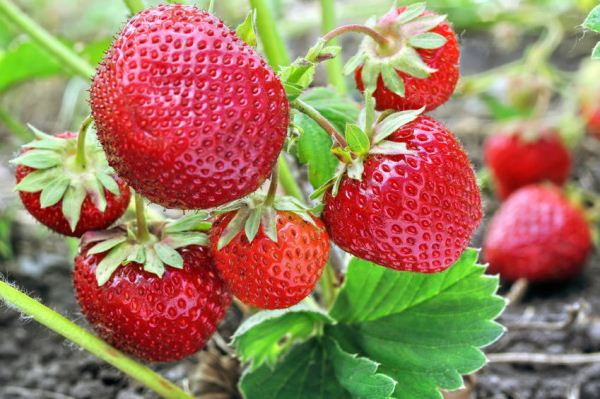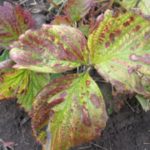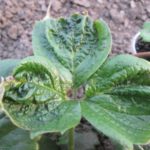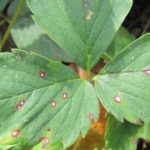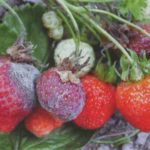Growing strawberries in the climatic conditions of the middle zone is a very difficult task. Remain without harvest, putting maximum effort perhaps due to natural disasters during the growth, flowering or ripening of berries. To wait for the result of the spent labor will help properly selected grade. In this article, let's take a look at the Zenga Zengan strawberry variety, described below.
Table of contents
Description of the strawberry variety Zenga Zengan
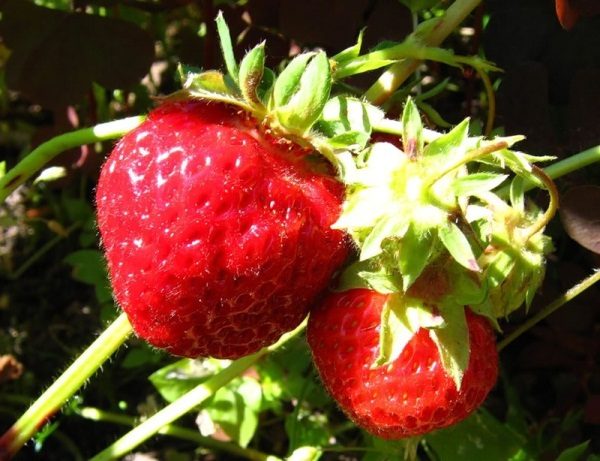
Developments on breeding the hybrid were made by German specialists in order to obtain a high-yielding variety of strawberry in cool climate countries. In 1954, under the supervision of German-born breeder Reinhold von Zengbush, in the vicinity of Hamburg a positive result was achieved. Use on an industrial scale gained popularity in the 60s and 70s of the 20th century.
Characteristics of berries
The following characteristics are inherent in the berries of this strawberry variety.:
- Weight. The beginning of fruiting presents copies of up to three, four dozen grams. By the end, the tendency to shredding appears. Averages range from ten to fifteen grams over the main period of picking berries.
- The form. It is characterized by a predominance of cone-shaped outlines, with an extension to the stem. Perhaps a variety with heart-shaped variations.
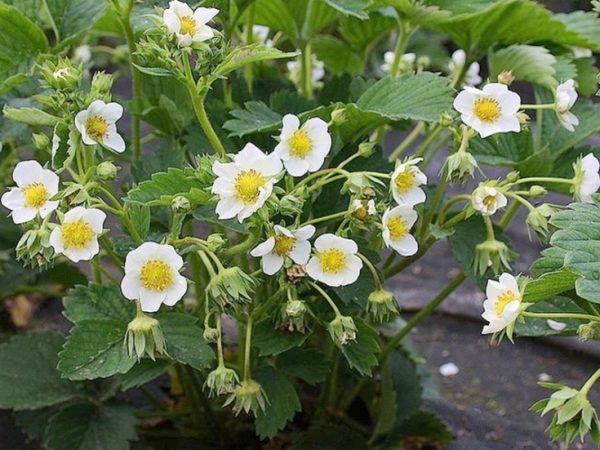
- Colour. Depends on the line from the place of growth: the shadow areas give a bright red color, daughters of the sun reach the burgundy tone. The flesh in similar conditions, starting with pink and ending with dark red, shade.
- Surface. Dense, with a glossy sheen, with eye-catching yellowish seeds. The consistency is juicy, homogeneous, without admixture of wateriness, which is well reflected in transportation and presentation. When cooked, the size of the berries remains unchanged.
- Taste. Sweet, with notes of sourness, can be used in fresh and processed forms. Inherent intense strawberry flavor.
Breeding history and region of growth
The beginning of the selection of varieties was laid in Lückenwald near Berlin, with the financing of the company Messr and Andersen.
Since 1945, the breeding development has been moved to three basic areas:
- Breeding field in Lückenwald;
- area on the basis of sandy soils of increased lightness in Glienicke;
- On clay heavy soils on the Elbe, in Barbie.
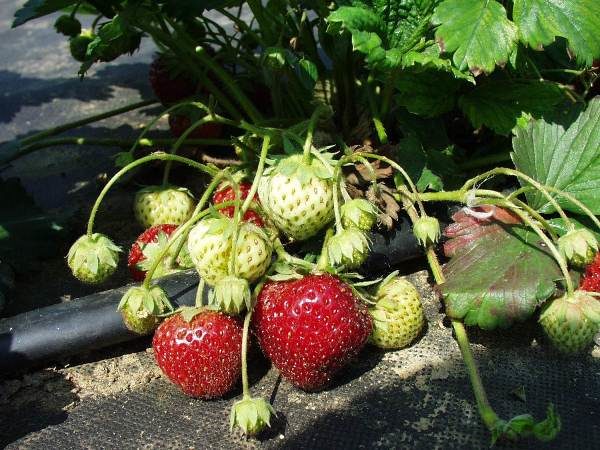
In 1948, the breeding material was placed on the experimental field in Wulfsdorf, behind the Hamburg border. Of the two species (crossing the Sieger and Marche varieties), the three clones obtained at the final stage, the most productive, were planted in an area of half a hectare in 1953. One year later A new variety has come out, the first one to be deep-frozen, called Zenga Zengan.
The advantages and disadvantages of the variety
Positive aspects include:
- No loss of berry shape during heat treatments (jam and freezing).
- Extensive commercial use based on fruit preservation as a result of shipments.
- Decent taste and fragrant aroma products.
- The ability to grow with different weather conditions, unpretentiousness in relation to the soil.
- Compact plantthat gives the right to use a limited area for multiple plantings.
- Increased immunity root system to fungal infections.
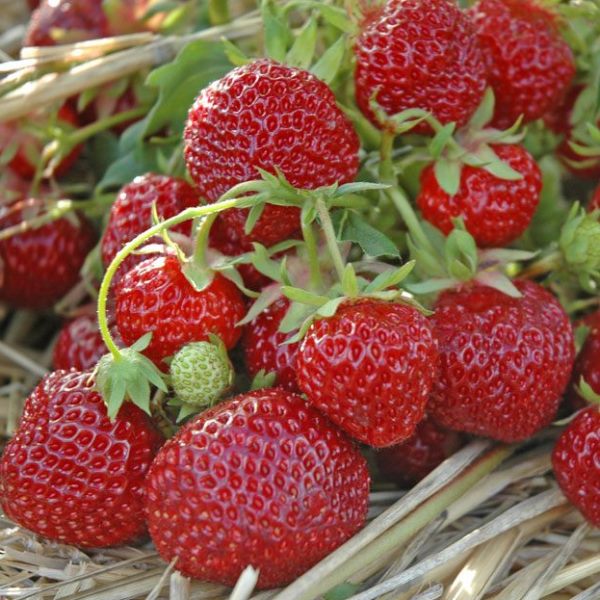
Each medal has a downside.:
- Long-term fruiting affects as berries (small by the end of the season).
- In hot weather need frequent watering.
- A planted variety with male flowers and presence of pollinating insects.
- Tendency to disease gray moldyu, frequent defeat strawberry mite.
Planting seedlings
Sowing material can be purchased in nurseries, on the market, through online stores. With this variety on its own plot propagated by seated received outlets.
How to choose

Careful inspection of seedlings:
- the lack of tearing up,
- freshness and suitability for carriage
- core presence green or light shade of strong and elastic structure,
- basal neck is about six centimeters in diameter,
- good development and no root damage.
Definition with a plot
Place for placement is selected with a flat surface (slopes and lowlands are not suitable for this hybrid). Maximum allowed solar lightingrequired for ripening, it is possible to obtain in the southern open area.
Soil preparation
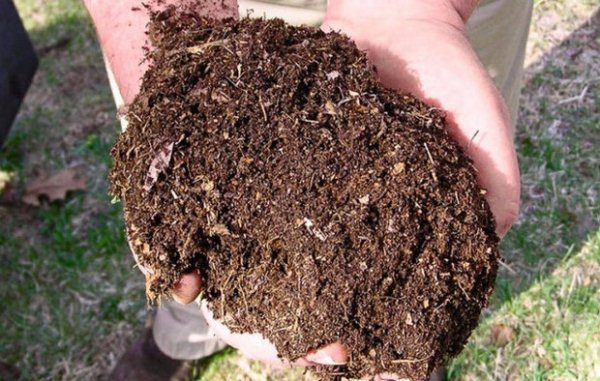
Stripping of weeds, pests (if found), feeding in the form of such fertilizers as humus, manure (rotted), superphosphate and potash components. To reduce the acidity (if necessary) use dolomite flour.
Landing in stages
- Getting ready small holes and moistened.
- The socket is placed with location on the surface.
- Powdered root system.
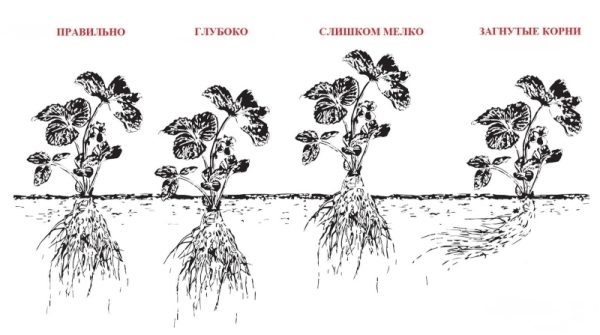
- Followed by abundant watering with hiding mulch.
- Methods are used one lower case, two lower case, and non-landing landing.
- Spacing between the bushes - not less than a quarter of a meter. Between the rows - three quarters.
Growing conditions
It is unpretentious culture, subject to certain requirements.
Watering
It is carried out according to weather conditions. In the heat, the soil is moistened as it dries, but at least once a week.. In the usual time enough to shed once for one, two weeks. The earth is soaked for a couple, three dozen centimeters deep.
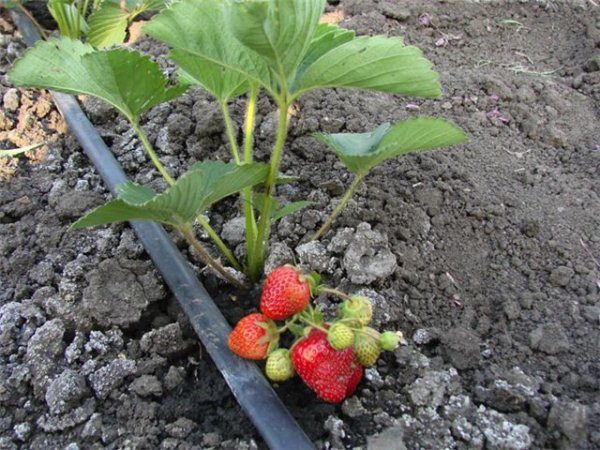
Water should not be allowed to come into contact with leaves, flowers and berries, therefore it is best to drip water.
Feedings
The basic rule is not to overdo it. Liquid-type fertilizers are directed towards greens, not fruits.. Accurate dosage required. Cowsweet with the addition of sulfate watering is carried out at the entrance of foliage in growth.
Urea solution is used for yield. Often used dry forms of fertilizers, by sending between the rows before loosening.
Duration of fruiting in good conditions and bad
Fruiting begins after a month at the end of flowering. The ripening of berries begins in the middle of the first summer month, and can last until the beginning of autumn.
When cold springs can bloom again (grade does not apply to remontant). Fledged buds of peduncles wake up in August. The berries in this case, not a lot, but clean and large.
Preparing for the winter
At the end of autumn planting covered. With warm, snowy winters, a large enough layer for mulching. Frosty winters require the use of spruce branches, covering material stretched over the arc (Spunbond, Agrotex, etc.).
Breeding methods
Hybrid varieties are multiplied through vegetation. The method of mustache seating involves the use of branches of bushes as planting material. high yield and healthy appearance.
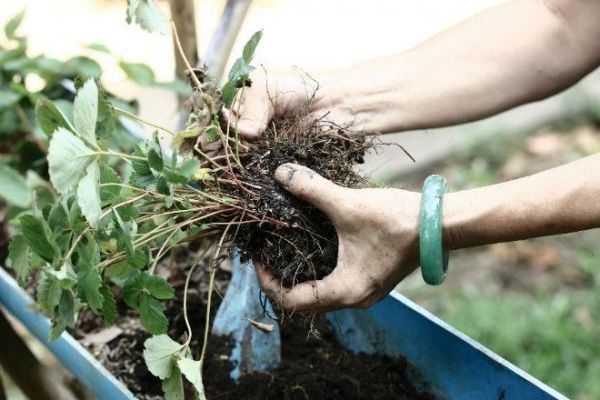
Seed propagation of a hybrid Victoria leads to the loss of all indicators of the cultivated variety.
Peculiarities of this variety
The strawberries of this variety have the following features.:
- Garden strawberries represented by tall but compact busheswith medium-sized green leaves.
- Characteristic small outlet formation (mustache).
- Location of peduncles below the foliage, or at the same level.
- No impact of severe frosts for fruiting (heat and dryness reduces the quality and quantity of berries).
- Distinctive yield (up to one and a half kilograms from each bush).
Diseases and pests
It is possible to prevent the destruction of bushes during preventive measures.:
- Maintain cleanliness ridges
- During remove spoiled copies
- Neat and correct top dressing,
- Spring and autumn treatments with fungicidal and pesticidal solutions,
- Change of the occupied area in three years (transplant).
If a disease or pest occurs, do the following:
- Strawberry Mite using acaricides (Fufanon, Actellic, Kemifos and Karbofos) in very accurate dosage. Suitable colloidal sulfur.
- Fighting spotted depends on the color of the lesions. The white form is treated with fungicides (Topaz, Horus or Gold), or with iodine solution. The brown variety provides for the use of a mixture of potassium permanganate, soda, iodine and soap.
- Gray rot eliminate by spraying a mixture of chalk, ash with the addition of copper sulfate with water. Mustard powder solution is used over a large area. The frequency of processing every ten days.
- Brown Strawberry Leaf Spot
- Strawberry bush struck by strawberry mite
- White spotted leaves
- Gray rot
Conclusion
Currently there is many new clones of this grade with the worst performance. The original variety is almost absent.
